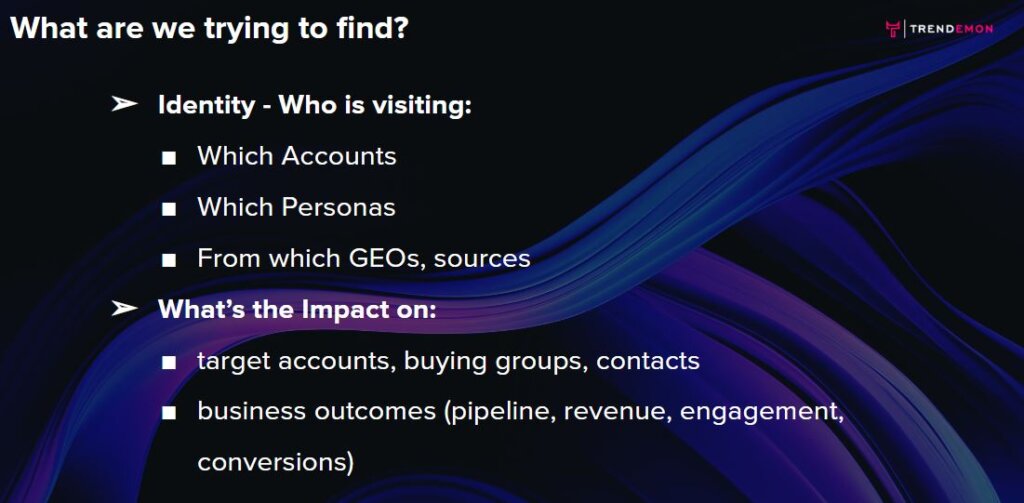Measure What Matters – Why Classic Analytics Fall Short in B2B

In the age of pipeline-focused GTM, most B2B marketers are still stuck using analytics tools designed for a different era — and a different business model. For this insightful webinar we teamed up with Elad Hefetz, CEO of Airfleet, to unpack why legacy analytics tools like Google Analytics fail to meet the needs of B2B marketers. We also offer a path forward: rethinking how to define success, what we’re measuring, and how to link website experience directly to revenue.
The Real Goal of B2B Websites
Most B2B websites were built with one goal in mind: lead generation. But that’s only one part of the picture. In B2B, your website also serves as a sales enablement tool and a branding asset — agendas that require a broader, more nuanced set of KPIs. If you’re not measuring how your site influences deal progression or educates key stakeholders, you’re likely missing the most important signals. That’s why the first step in fixing broken analytics isn’t picking the right tool — it’s defining the purpose of your website and aligning metrics accordingly.
Why Classic Analytics Fail B2B Marketers
Tools like Google Analytics were built for transactional websites — not complex, multi-touch B2B buying journeys. Traditional metrics like pageviews or average time on site don’t tell you who’s visiting or how those visits contribute to pipeline. Worse, they often mislead: a spike in traffic from a recruitment campaign may inflate engagement numbers without adding a single qualified lead. The core issue? De-anonymization and segmentation. Without knowing who your buyers are — by account, intent, and role — the data is meaningless. B2B needs to move beyond vanity metrics and focus on buying group behavior and account-level engagement.

Start Measuring Impact, Not Clicks
If you want to make smarter decisions — and prove ROI to your CFO — you need to start tracking the right signals. You can do so by segmenting website visitors by campaign, persona, and ICP fit using existing tools like UTMs and first-party data. Even without new tech, marketers can use this segmentation to understand what high-value visitors do on site and how that behavior correlates with pipeline creation. When you understand who is engaging, what content they engage with and how that contributes to revenue, your website becomes a performance channel — not just a content library.

Click here to view the presentation slides.
Traditional analytics only go so far—download the whitepaper to learn how to prove marketing ROI by connecting content, journeys, and personalization to real pipeline impact.
Watch the full webinar: